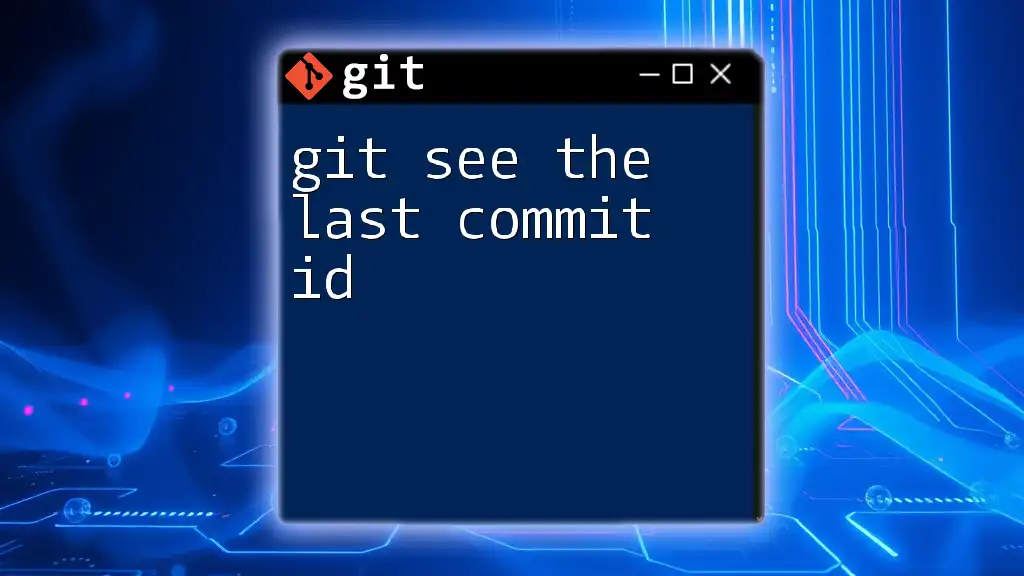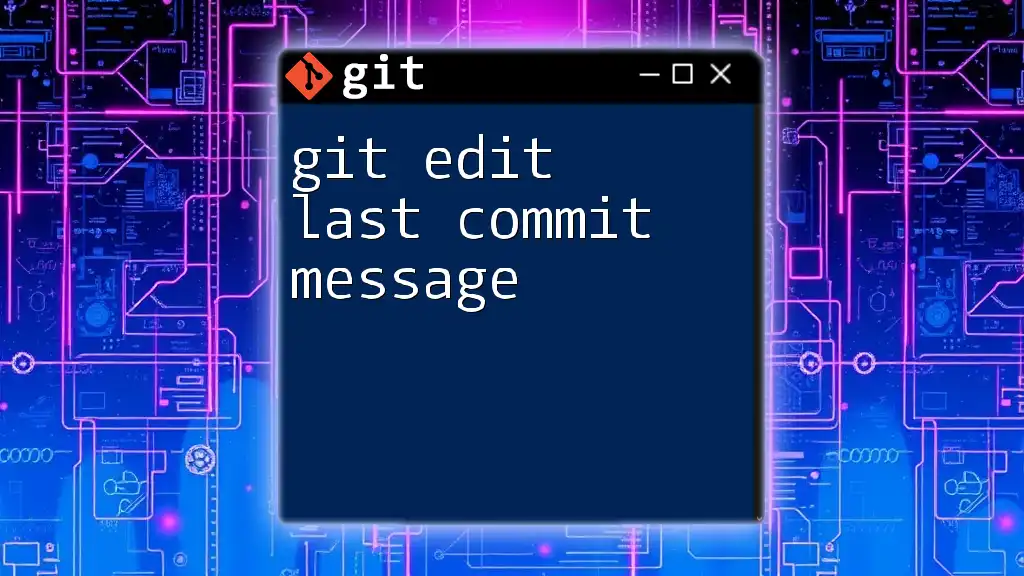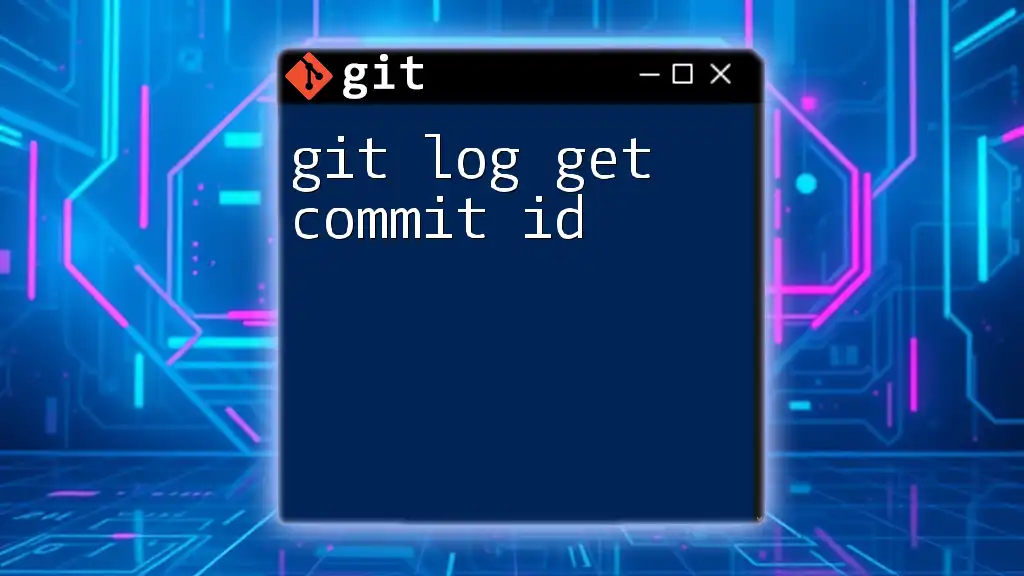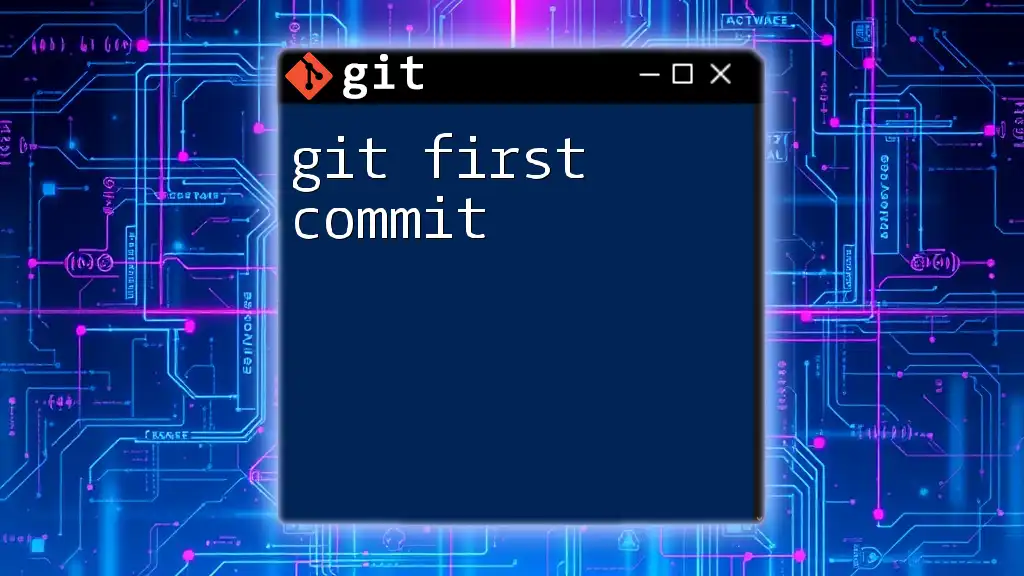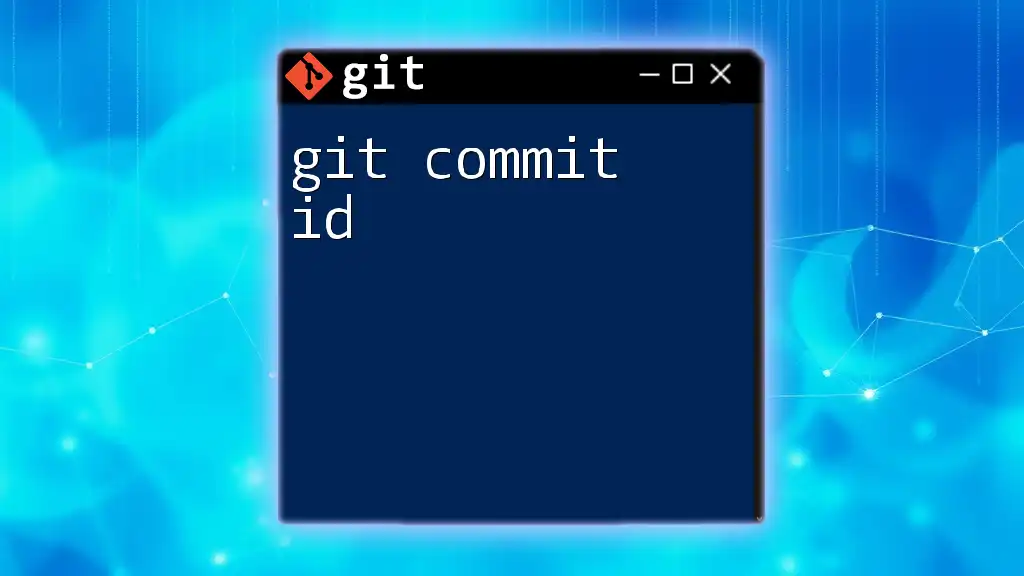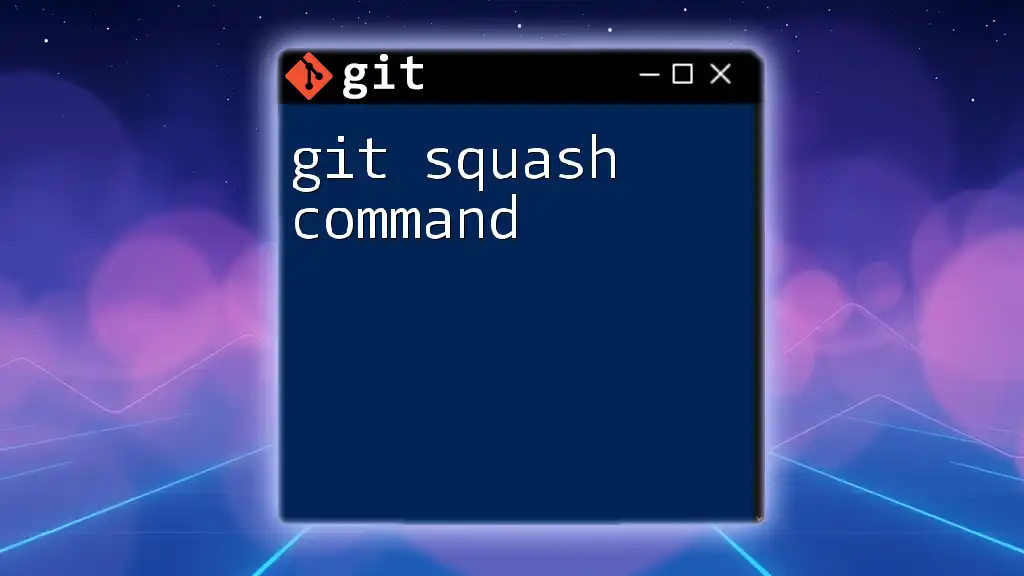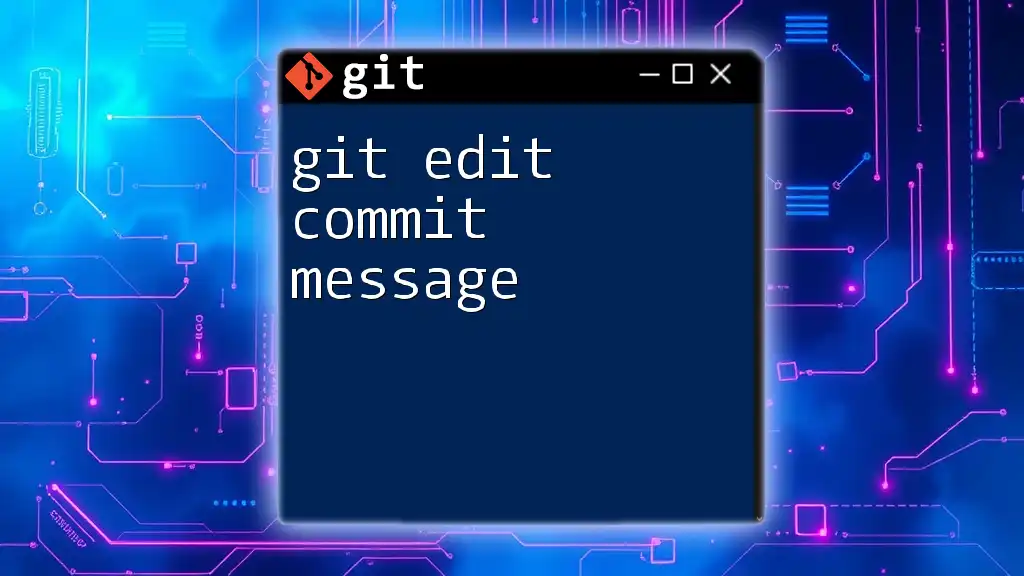You can see the last commit ID in Git by using the following command:
git rev-parse HEAD
Understanding Git Commits
What is a Git Commit?
A Git commit represents a snapshot of the changes made to your project at a particular point in time. Each commit is akin to a historical record that captures the state of your project, providing a comprehensive picture of how the project has evolved.
Commits are crucial for tracking changes, allowing developers to revisit previous versions of their code, identify what changes were made, and understand why those changes were necessary. Each commit is typically accompanied by a message that describes the changes, providing context for yourself and other collaborators.
Structure of a Commit
A commit is composed of several key components:
- Author: This field indicates who made the commit. The author's name and email are automatically captured by Git during the commit process, ensuring accountability.
- Date: The timestamp of when the commit was made, which helps track the timeline of project development.
- Commit ID: This is the unique identifier for the commit, presented as a SHA-1 hash. The commit ID is essential for referencing specific commits in various Git operations.
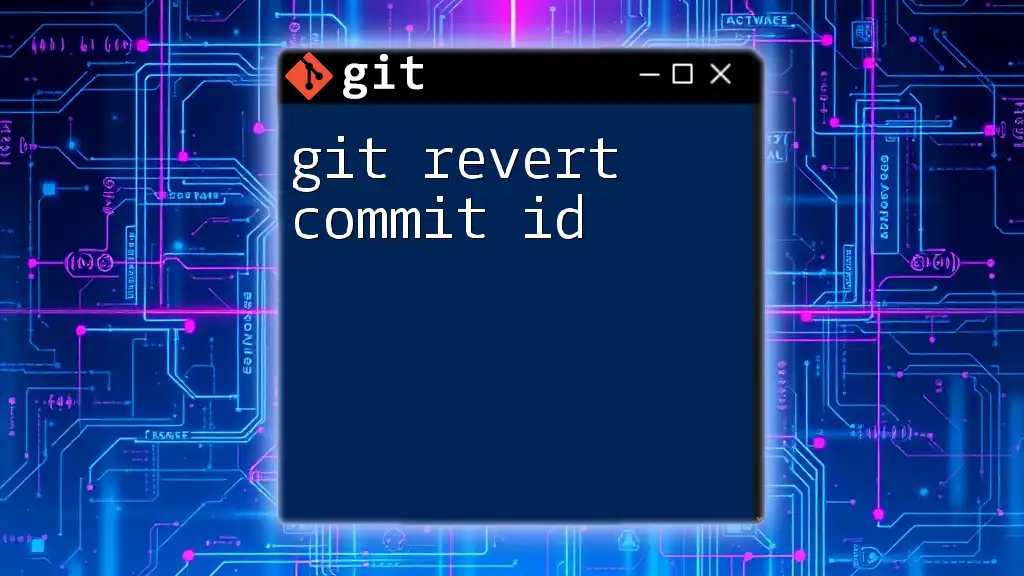
Accessing the Last Commit ID
Using the `git log` Command
To see the last commit ID, one of the most common methods is to use the `git log` command. This command displays the commit history of a repository.
How It Works: By default, `git log` shows the full commit history, but you can customize its output with various options.
Basic Usage: To see just the most recent commit, you can use:
git log -1
This command tells Git to display only the last commit in the log.
Example: Running the command will yield output like:
commit 9fceb02b0c3c8f1c8c68c4a2ed8f7c5d5ebf62e0
Author: Your Name <your.email@example.com>
Date: Tue Oct 3 10:56:20 2023 -0400
Fixed a bug in the application
Here, 9fceb02b0c3c8f1c8c68c4a2ed8f7c5d5ebf62e0 is the commit ID, which uniquely identifies this specific snapshot.
Utilizing the `git rev-parse` Command
Another efficient way to access the last commit ID is through the `git rev-parse` command.
Introduction to `git rev-parse`: This command is designed to parse and convert various objects in Git to their respective SHA-1 hash values.
Fetching the Last Commit ID: You can retrieve the last commit ID using:
git rev-parse HEAD
In this command, `HEAD` refers to the latest commit on the current branch. It provides a clear, concise way of accessing the commit ID without additional details.
Example: Executing this command might return:
9fceb02b0c3c8f1c8c68c4a2ed8f7c5d5ebf62e0
This straightforward output shows you the commit ID directly, emphasizing its usefulness in scripts or other automated processes.
Quick Visual Summary: Command Comparison
| Command | Output | Use Cases |
|---|---|---|
| `git log -1` | Full commit details (includes author, date, and message) | When you want context along with the commit ID |
| `git rev-parse HEAD` | Only the commit ID | For quick retrieval or when scripting |
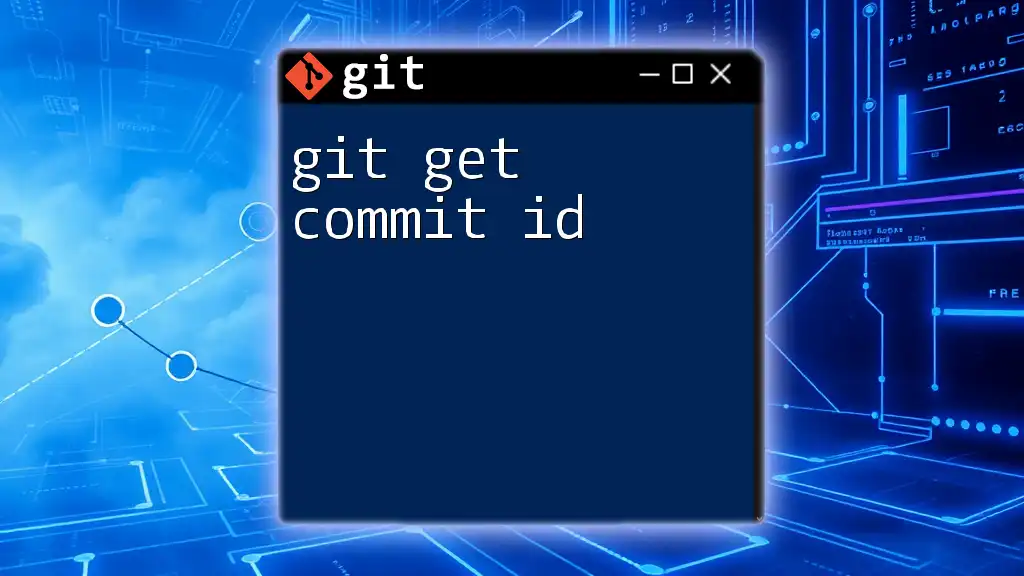
Additional Tips for Viewing Commits
Viewing Detailed Commit Information
If you want a streamlined yet informative view of recent commits, you can modify the `git log` command with the `--oneline` option:
git log --oneline
This command condenses the output, showing each commit in a single line that includes the commit ID and the commit message.
Example: The output may look like this:
9fceb02 Fixed a bug in the application
3b4e3c7 Added new feature for user profile
This format provides a quick reference to your last commits, showcasing both their IDs and messages, thus allowing for efficient browsing of your project's history.
Command Aliases for Efficiency
Creating aliases for frequently used Git commands can significantly enhance productivity. A practical example is setting up an alias to quickly retrieve the last commit.
Example: You can define a command alias in your global Git configuration:
git config --global alias.last 'log -1 --oneline'
Now, simply typing `git last` will execute `git log -1 --oneline`, which returns just the last commit ID with its message in a concise format.

Practical Applications of Last Commit ID
Troubleshooting
Understanding how to retrieve the last commit ID is essential for troubleshooting. If an issue arises in your application, knowing the last commit can help you identify the changes that may have introduced the problem. You can reference this ID to examine the associated changes and pinpoint where things went wrong.
Tagging and Release Management
Commit IDs play a crucial role in tagging releases. By tagging a specific commit with a version number, you create a permanent reference to that state of the project, allowing for easy rollbacks and maintaining historical records.
Example: To tag the last commit, you can use the following command:
git tag -a v1.0 -m "Release version 1.0"
This creates a tag named `v1.0` associated with the latest commit, which is invaluable for maintaining clear versioning in your project.

Conclusion
Knowing how to git see the last commit id quickly is crucial for effective version control with Git. By utilizing commands like `git log -1` and `git rev-parse HEAD`, you can effortlessly access this important information.
Practice these commands frequently to improve your workflow, and don't hesitate to explore the versatility of other Git commands to enhance your version control skills.
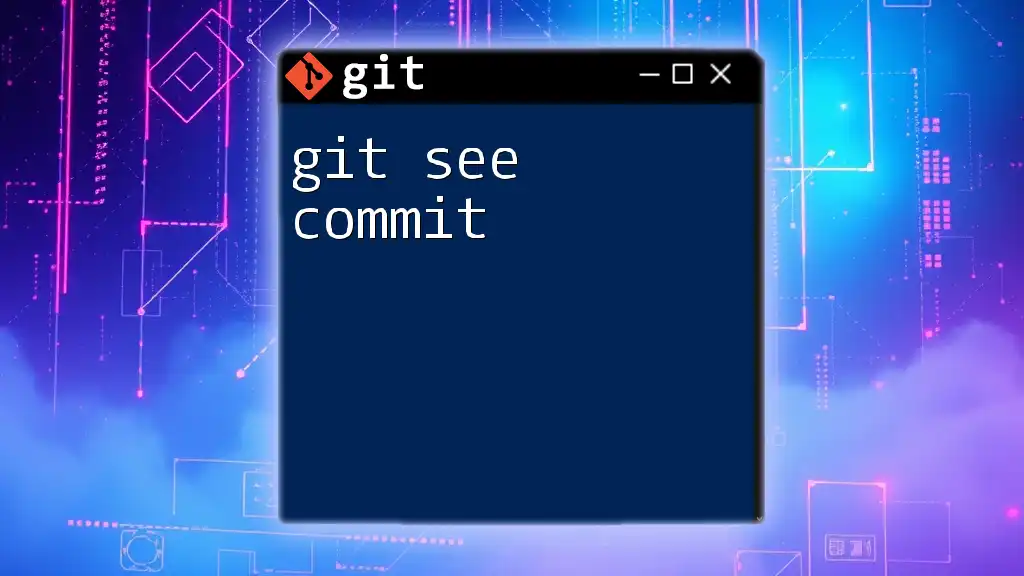
Call to Action
For more tips on mastering Git commands, consider subscribing to our blog. Discover related articles to broaden your Git knowledge and share your experiences or questions in the comments section below.
References and Further Reading
For an in-depth understanding of Git's functionality, check out the official Git documentation, or explore recommended tutorials and resources to further enrich your knowledge.

